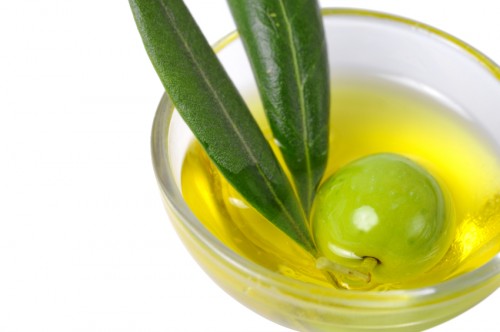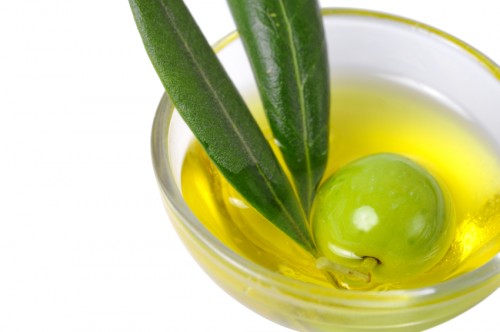 Yummy, with a chance of drizzles.Homer (the Greek scribe, not the cartoon dork) is supposed to have declared extra-virgin olive oil “liquid gold.” If by that he meant something to treat as if precious, things have changed considerably three millennia later and half a world away from the Mediterranean.
Yummy, with a chance of drizzles.Homer (the Greek scribe, not the cartoon dork) is supposed to have declared extra-virgin olive oil “liquid gold.” If by that he meant something to treat as if precious, things have changed considerably three millennia later and half a world away from the Mediterranean.
TV cooking gurus evoke Homer’s gold with a breezy acronym (EVOO) and splash it around like it’s tap water. Even local- and seasonal-minded cooks like me treat it like a pantry staple. I live thousands of miles from the nearest olive grove, yet I rarely pass a day without heating some oil in a pan with a little chopped onion and chile pepper to build flavor for a sauté; drizzling it over salad greens with a dash of vinegar and a pinch of salt for a quick dressing; or assaulting a finished pasta dish with it (to the horror of some dining companions).
Unfortunately, olive oil’s ecological footprint has exploded along with its popularity. In Homer’s time, household olive production ringed the Mediterranean, part of a highly productive polyculture that included grapevines, nut trees, and more. Remnants of that tradition still exist (as do some of the olive trees, which can live past 1,000 years), but most olive oil now comes from vast plantations that rely heavily on irrigation and agrichemicals.
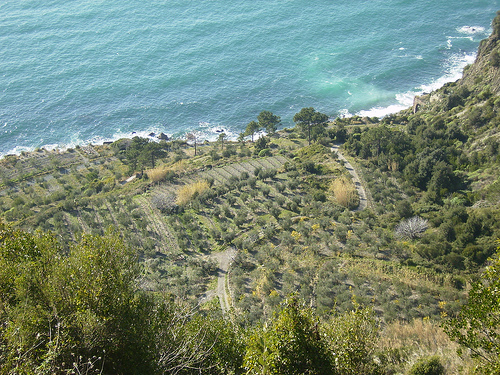 An olive grove in Italy.Jon Shave via flickrAccording to a scathing 2008 report in the U.K.’s Ecologist magazine, industrial-scale olive production is turning large swaths of southern Europe into desert, drawing down the water table, squeezing out biodiversity, and drenching the earth in chemicals. The resulting gusher of cheap oil undercuts the small-scale artisans who made the product so popular in the first place.
An olive grove in Italy.Jon Shave via flickrAccording to a scathing 2008 report in the U.K.’s Ecologist magazine, industrial-scale olive production is turning large swaths of southern Europe into desert, drawing down the water table, squeezing out biodiversity, and drenching the earth in chemicals. The resulting gusher of cheap oil undercuts the small-scale artisans who made the product so popular in the first place.
If that weren’t enough, a shocking portion of the product that appears on our supermarket shelves as extra-virgin olive oil is actually cut with cheap sunflower and hazelnut oil, as this 2007 New Yorker exposé shows. These counterfeit oils, too, are no doubt grown under ecologically devastating circumstances.
Against this backdrop of industrialization and adulteration, I wanted our tasting to include real olive oils (I know, picky) from producers that aren’t destroying the ecology of the Mediterranean. I would love to have included some of the fantastic California-based oils now available — such as Frog Hollow Farm — but could not get my hands on any certified-organic ones for this tasting. I rarely see much California oil in supermarkets outside of the state. And in freight terms, it’s probably more efficient for East Coasters to buy oils shipped by boat from Europe rather than by truck from California. (As for shipping impacts in general, olive oil is on that list of things — coffee, tea, cocoa, wine — that come only from specific areas, don’t require refrigeration, and can be packed quite efficiently. Thus I don’t fret much about food miles.)
Given the harsh economic realities of our times, I had to rule out the magnificent $40-plus bottles that come direct from small, diversified farms. Neither Grist’s budget, nor those of most families, can afford such luxuries these days.
So to proceed, I scoured the shelves of two natural-food stores for relatively inexpensive organic olive oils. (I figured the organic-certification process would largely weed out adulterated products.) I found five. Then I assembled a panel of five food lovers to join me in tasting them: first unadorned as a dip for bread, then tossed with spaghetti along with a pinch of sea salt and chopped fresh garlic. Here’s what we found.
[A note on origins: “Product of Italy” is a notoriously misleading phrase, one that actually tells us little about an oil’s country of origin. Olive-oil bottlers in Italy can legally bring oil in from elsewhere — common sources include Spain and Turkey — bottle it in Italy, and declare it a “Product of Italy.”]
Whole Foods 365 Everyday Organic Extra Virgin Olive Oil
$6.49/16.9 oz, or $0.38/ounce
Origin: 100 percent Italian olives (according to the company’s website)
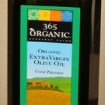 This one made everyone’s top three in preference, and thus took the prize. I found it delicate, subtle — almost to the point of blandness — and satisfying, both on its own and in the pasta. One taster found it “nice [but] basic” on its own, and “very nice … strong” on the noodles. Others comments were “bland but yummy,” “delicious,” and “peppery.”
This one made everyone’s top three in preference, and thus took the prize. I found it delicate, subtle — almost to the point of blandness — and satisfying, both on its own and in the pasta. One taster found it “nice [but] basic” on its own, and “very nice … strong” on the noodles. Others comments were “bland but yummy,” “delicious,” and “peppery.”
La Piana 100% Organic Extra Virgin Olive Oil
$12.49/16.9 oz, or $0.74/ounce
Origin: “Product of Italy”
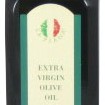 This one fared solidly, landing in the middle of the pack. Its most enthusiastic supporter called it “clean crisp, nice, smooth” in its unadorned state, but “nothing amazing” in the pasta. Other comments ranged from “olive-y” to “nice flavor” to “spicy and balanced.” I found it to be perfectly nice, but a little boring.
This one fared solidly, landing in the middle of the pack. Its most enthusiastic supporter called it “clean crisp, nice, smooth” in its unadorned state, but “nothing amazing” in the pasta. Other comments ranged from “olive-y” to “nice flavor” to “spicy and balanced.” I found it to be perfectly nice, but a little boring.
Spectrum Organic Extra Virgin Olive Oil
$16.99/25.4 oz, or $0.66/ounce
Origin: Spain
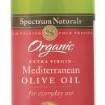 This one divided the panel. I found it the most interesting of the bunch, with assertive herbal and spice notes lacking in the other entries. In the pasta, the oil stood up to and balanced the garlic. I rated it number one. One other taster concurred. She found it “yummy, full-flavored” on its own, “earthy and rich” in the pasta. Other tasters disagreed – -vigorously. “Very bitter, tastes like gasoline,” roared one. Two others agreed about the bitterness. Another found it “too acidic” with bread, but “nutty” with pasta.
This one divided the panel. I found it the most interesting of the bunch, with assertive herbal and spice notes lacking in the other entries. In the pasta, the oil stood up to and balanced the garlic. I rated it number one. One other taster concurred. She found it “yummy, full-flavored” on its own, “earthy and rich” in the pasta. Other tasters disagreed – -vigorously. “Very bitter, tastes like gasoline,” roared one. Two others agreed about the bitterness. Another found it “too acidic” with bread, but “nutty” with pasta.
Zoe Organic Extra Virgin Olive Oil
$17.99/23.5 oz, or $0.76/ounce
Origin: Spain
 I liked this one; the other tasters, not so much. I thought it delivered a smooth and buttery flavor, with a hint of bitter tannin. One taster found it acceptable with bread (“spicy on the back of the mouth, good first taste”), but deplorable on pasta (“so bitter and oily”). Another taster’s impression went from “grassy” to “fishy” in the progression from bread to pasta. “Too light, with bitter overtones,” concluded another.
I liked this one; the other tasters, not so much. I thought it delivered a smooth and buttery flavor, with a hint of bitter tannin. One taster found it acceptable with bread (“spicy on the back of the mouth, good first taste”), but deplorable on pasta (“so bitter and oily”). Another taster’s impression went from “grassy” to “fishy” in the progression from bread to pasta. “Too light, with bitter overtones,” concluded another.
Bionaturae Organic Extra Virgin Olive Oil  $12.50/17 oz, $0.73/ounce
$12.50/17 oz, $0.73/ounce
Origin: “Made in Italy” and “100% Italian”
This one did well, placing second. It fared particularly well on pasta. I found it muted but delicious on bread and balanced and correct on the pasta. Its biggest champion declared “dainty … lightly spicy” (bread) and “very olive-y … rich and earthy” (pasta). Others generally found it disagreeable with the bread but much improved on pasta.
 The bottom line: In my kitchen, I divide olive oils into two categories: “everyday,” which I use for low-heat sautés and strong-flavored dressings; and “finishing,” which I use only to drizzle over dishes just before eating. I would happily use any of these as everyday oils; I will probably give the Spectrum and Bionaturae oils a turn as finishers. The overall favorite, though, was Whole Foods’ rock-solid and aptly named 365 Everyday. And at about half the per-ounce price of the other oils, it’s quite a bargain.
The bottom line: In my kitchen, I divide olive oils into two categories: “everyday,” which I use for low-heat sautés and strong-flavored dressings; and “finishing,” which I use only to drizzle over dishes just before eating. I would happily use any of these as everyday oils; I will probably give the Spectrum and Bionaturae oils a turn as finishers. The overall favorite, though, was Whole Foods’ rock-solid and aptly named 365 Everyday. And at about half the per-ounce price of the other oils, it’s quite a bargain.

